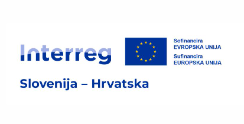Geology
The Goričko region boasts a fascinating geological history that is mirrored in its diverse geological composition. Almost the entire territory of this part of Slovenia is covered with Tertiary rocks, aged between 66 and 1.6 million years. The oldest rocks, found in small areas around Sotina and Serdica, are classified as phyllitoid schist shales. Today, these ancient rocks emerge prominently from the softer Tertiary sediments, forming the highest hills and steepest slopes of Goričko.
The formation of ancient metamorphic phyllitoid shales was followed by a prolonged geological period of continental land. It was not until the end of the Oligocene, about 23 million years ago, that the region subsided and was flooded from the east by the Pannonian Sea. Only the most northwestern and highest part of the region, around Sotina, remained above water. The sea covered the area for another 18 million years. During the Miocene and Pliocene, the original marine sediments—gravels, sands, and clays—were gradually compacted and transformed into sedimentary rocks, including Miocene limestones, sandstones, and marls.
As fluvial outflow increased, the Pannonian Sea began to lose its salinity. Simultaneously, the sea receded eastward due to the gradual uplift of the western regions.
Approximately 1.6 million years ago, during the Upper Pliocene, an active volcano erupted near Klöch, Austria. The remnants of this volcanic activity are evident in the village of Grad, where layers of basaltic tuffs and tuffites are interspersed with partially consolidated deposits of quartz gravel, sand, marl, and clay. Blackish basalt is also found southwest of Kaniža, Hungary. In the past, these volcanic rocks were used as building materials. Today, they hold mineralogical significance due to their high content of olivine nodules, making the Grad area the only known source of olivine minerals in Slovenia.
In the current Holocene epoch, the region has been shaped by the accumulation of fluvial sediments in the valleys, which has gradually eroded and lowered the hilly terrain.
In the past, Goričko was renowned for its clay deposits, which played a significant role in the development of pottery. This heritage is preserved in an exhibition at Grad Castle, while contemporary pottery craftsmanship continues in the villages of Pečarovci and Filovci.








